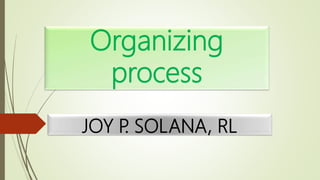
Power,authority
- 3. Power The potential or ability to influence the behavior of others.
- 4. TYPES OF POWER Legitimate Power Reward Power Coercive Power Expert Power Referent Power
- 5. Legitimate Power power that comes from a formal management position and is based upon authority recognized in accordance with the position in an organization structure.
- 6. Reward Power stems from the power to provide rewards to people.
- 7. Coercive Power power that derives from the potential to inflict punishment.
- 8. Expert Power power derived from expertise of knowledge.
- 9. Referent Power refers to power that derives from the respect and esteem accorded to an individual by virtue of personal attributes that command respect and admiration.
- 10. Authority the legitimate right of the supervisor to direct subordinates to take action within the scope of supervisor’s power.
- 11. FORMS OF AUTHORITY Line Authority Staff Authority Team Authority
- 12. Line Authority direct supervisory authority from superior to subordinates. authority flows in a direct chain of command from the top of the company to the bottom.
- 13. Staff Authority more limited authority to advise. based on expertise usually involves advising line managers. the staff members are advisers and counselors who aid line departments in making decisions but do not have the authority to make final decisions.
- 14. Team Authority granted to committees or work teams involved in an organization’s daily operations . work teams are groups of operating employees empowered to plan and organized their own work and to perform that work with a minimum of supervision.
- 15. Responsibilty According to Haimann, “Responsibility is the obligation of subordinate to perform the duty as required by his superior. According to Mondy, “Responsibilty is an obligation to perform tasks and to account for their satisfactory compliance.” According to McFarland, “Responsibilty is the duties and activities assigned to a position or to manager.”
- 18. Trust Trust is defined as to have confidence, faith or hope in someone or something. (https://www.yourdictionary.com › trust) According to Stephen Covey, “the first job of any leader is to inspire trust.” Trust means that you rely on another person’s integrity to do what is right and provide a sense of safety.
- 19. CHARACTERISTICS VISIBLE IN ORGANIZATIONS WITH HIGH LEVELS OF TRUST: Credibility: employees mean what they say, and believe what they say is true. They have the confidence that the actions of others will remain consistent with their words. Management is seen to be ethical in its business practices. Respect: employers support their employees’ professional growth and offer consideration of their ideas in decision-making processes. Fair treatment: employees believe they are treated fairly, regardless of their position within the organization. Interaction: something as simple as a conversation between co- workers, or a five-minute chat in the break room between managers and employees, can convey a willingness on the part of one person to do something that is to the benefit of another person’s health and well-being.
- 20. The following mnemonic can be kept in mind when trying to improve trust in an organization: T = Teach: Teach everyone in the organization how things work; make it as transparent as possible. R = Reward: Make sure reward systems align with corporate value and goals. U = Unconditional Support: Encourage innovation. Create an environment where mistakes are opportunities to learn, not to punish. Give employees permission to “think outside the box. S = Share Information: Communicate clearly and frequently. T = Trustworthy: Make commitments and keep them.
- 21. Delegation The transfer of authority within prescribed limits. Appointing a person to act on one’s behalf. Entrusting of authority, power and responsibility to another.
- 22. A simple rule is the SMART acronym, or better still, SMARTER. It's a quick checklist for proper delegation. These tasks must be: Specific Measurable Agreed Realistic Timebound Ethical Recorded
- 23. The steps of successful DELEGATION : 1.Define the task 2. Select the individual or team 3. Assess ability and training needs 4. Explain the reasons 5. State required results 6. Consider resources required 7. Agree deadlines 8. Support and communicate 9. Feedback on results
- 24. THANK YOU FOR LISTENING !!!!
- 25. SOURCES https://www.businessballs.com/team-management/delegation-how-to/ http://inservice.ascd.org/the-importance-of-trust-in-your-organization/ https://www.yourthoughtpartner.com/blog/bid/59619/leaders-follow-these-6- steps-to-build-trust-with-employees-improve-how-you-re-perceived https://www.yourthoughtpartner.com/blog/bid/59619/leaders-follow-these-6- steps-to-build-trust-with-employees-improve-how-you-re-perceived https://www.ideasforleaders.com/ideas/creating-a-culture-of-trust-in- organizations Salvador,S.M. and Fua-Geronimo,E.C.(2013).Principles and practices of management and organization.Manila,Bulacan:Allen Adrian Books.
